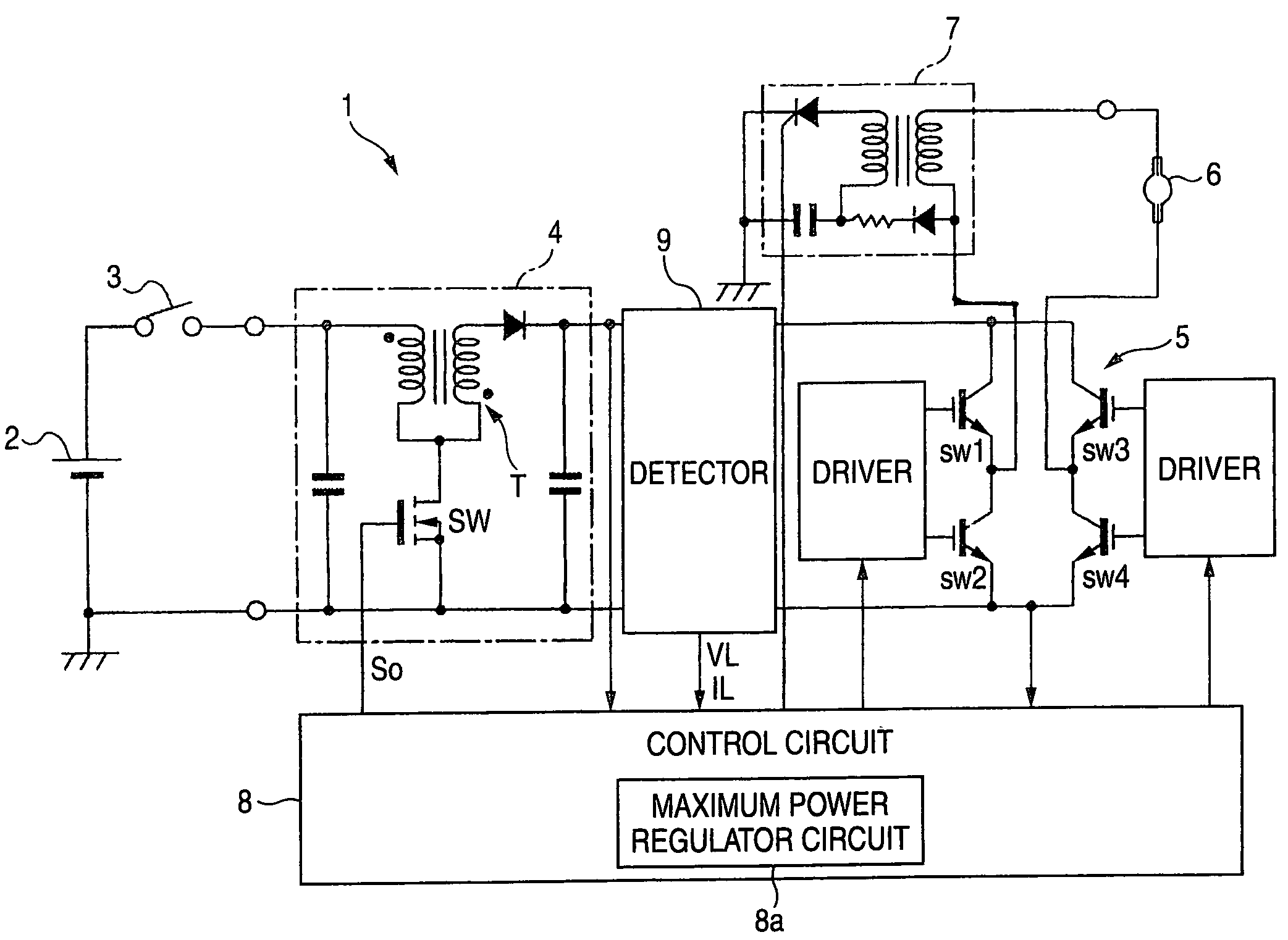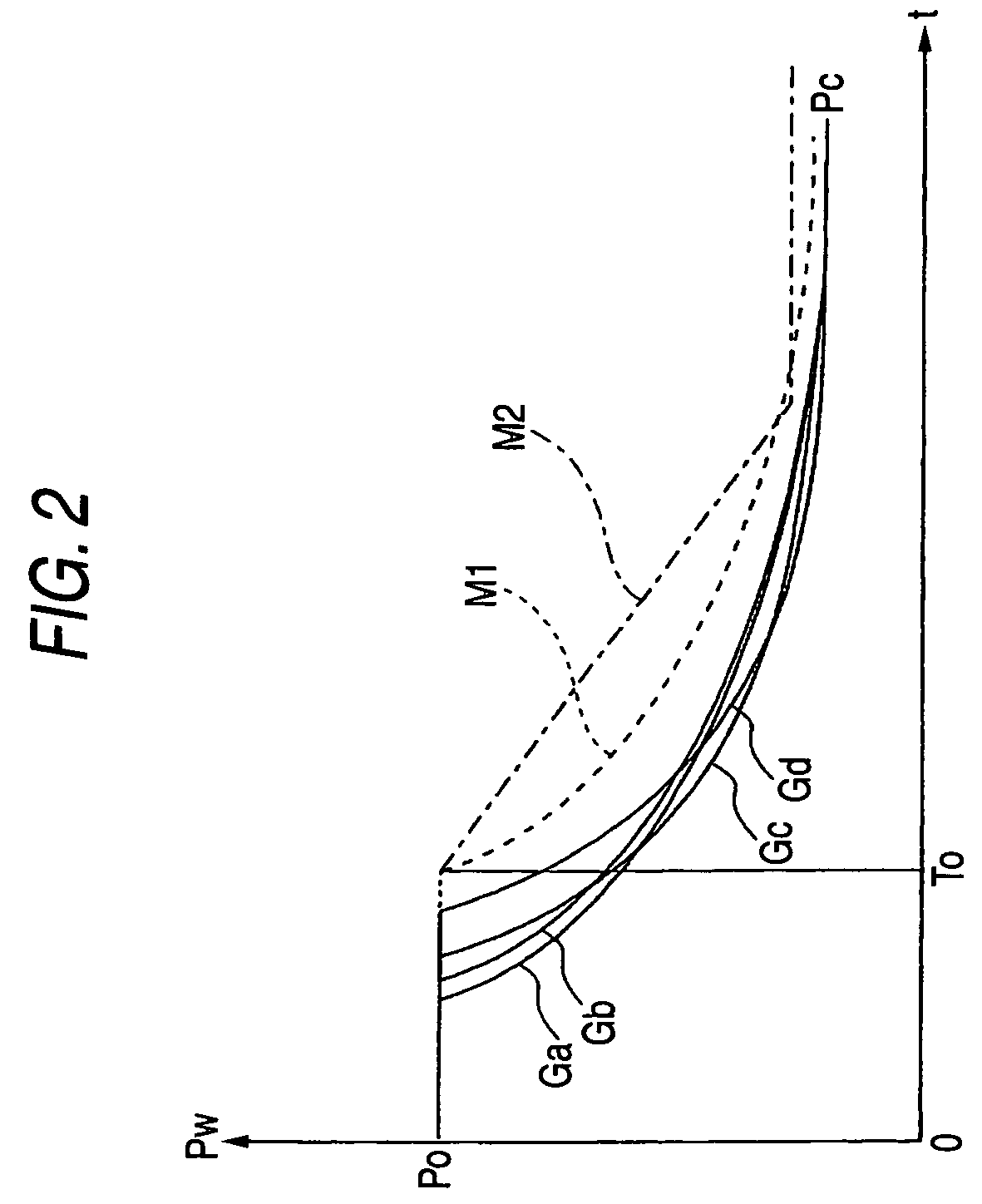Lighting apparatus for discharge lamp
a technology of discharge lamp and discharge lamp, which is applied in the direction of electric variable regulation, process and machine control, instruments, etc., can solve the problems of increasing the amount of generated heat, large loss, and increasing the power loss of the lighting circuit, so as to prevent the continued application of excessive transient power
- Summary
- Abstract
- Description
- Claims
- Application Information
AI Technical Summary
Benefits of technology
Problems solved by technology
Method used
Image
Examples
Embodiment Construction
[0025]FIG. 1 illustrates an exemplary, non-limiting basic configuration of a discharge lamp lighting apparatus 1.
[0026]DC voltage from a DC power supply 2 is supplied to a DC-DC converter circuit 4 through a noise filter circuit, not shown, by turning on a lighting switch 3.
[0027]The DC-DC converter circuit 4 receives a DC input voltage from the DC power supply 2, and converts the received DC input voltage to a desired DC voltage. For example but not by way of limitation, a fly-back type DC-DC converter can be used for the DC-DC converter circuit 4. In a circuit configuration having a transformer T and a switching element SW on the primary side of the transformer T, the switching element SW is driven by a control signal So from a control circuit 8, later described.
[0028]A DC-AC converter circuit 5 is provided for converting an output voltage of the DC-DC converter circuit 4 to an AC voltage that is supplied to a discharge lamp 6. For example but not by way of limitation, in a circui...
PUM
 Login to View More
Login to View More Abstract
Description
Claims
Application Information
 Login to View More
Login to View More - R&D
- Intellectual Property
- Life Sciences
- Materials
- Tech Scout
- Unparalleled Data Quality
- Higher Quality Content
- 60% Fewer Hallucinations
Browse by: Latest US Patents, China's latest patents, Technical Efficacy Thesaurus, Application Domain, Technology Topic, Popular Technical Reports.
© 2025 PatSnap. All rights reserved.Legal|Privacy policy|Modern Slavery Act Transparency Statement|Sitemap|About US| Contact US: help@patsnap.com



